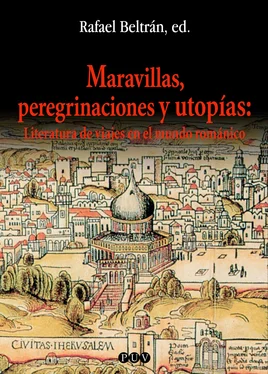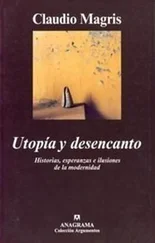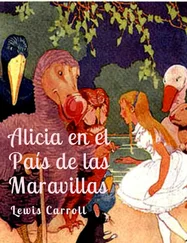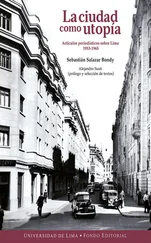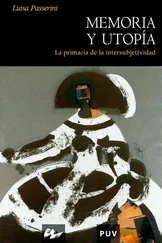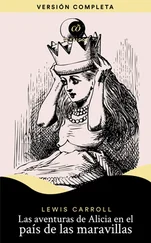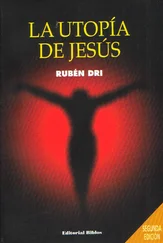–– (1993), «Introduction to Inferno », en Rachel Jacoff (ed.), The Cambridge Companion to Dante (Cambridge: University Press), pp. 173-191.
FRIEDMAN, John Block (1981), The Monstrous Races in Medieval Art and Thought (Cambridge, MA: Harvard University Press).
GARCÍA GUAL, Carlos (1992), «Un viajero mítico: Alejandro en el medievo», en Viajeros, peregrinos, mercaderes en el Medievo (Pamplona).
–– (1998), «Viajes al fondo del mar», en Sirenas, monstruos y leyendas: bestiario marítimo , ed. Rafael de Cózar & Gonzalo Santonja ([Madrid]: Sociedad Estatal Lisboa ’98), pp. 43-62.
GAUTIER DE CHÂTILLON (1855), «Alexandreis» sive «Gesta Alexandri Magni» , J.-P. Migne (ed.), Patrologia Latina, 209, cols. 459-574.
GRANDGENT, C. H., Charles S. SINGLETON (1975), Companion to «The Divine Comedy» (Cambridge, MA: Harvard University Press).
HARLEY, J. B., David WOODWARD, ed. (1987), A History of Cartography , I: Cartography in Prehistoric, Ancient, and Medieval Europe and the Mediterranean (Chicago: University Press).
HAY, Denys (1991), «The Geographical Boundaries of the Late Medieval World», en Essays in Honor of Edward B. King (Sewanee, TN: The University of the South), pp. 135-146.
HOLLANDER, Robert (1969), Allegory in Dante’s «Commedia» (Princeton: University Press).
HOLLOWAY, Julia Bolton (1986), Brunetto Latini: An Analytic Bibliography , Research Bibliographies and Checklists, 44 (Londres: Grant & Cutler).
KIRKPATRICK, Robin (1987), Dante’s «Inferno»: Difficulty and Dead Poetry , Cambridge Studies in Medieval Literature, 1 (Cambridge: University Press).
LOOMIS, Roger Sherman (1940-1941), «King Arthur and the Antipodes», Modern Philology , 38, pp. 289-304. Reimpr. en su Wales and the Arthurian Legend (Cardiff: University of Wales Press, 1956), pp. 61-76.
LOOMIS, Roger Sherman (1959), «The Legend of Arthur’s Survival», en Roger Sherman Loomis (ed.) Arthurian Literature in the Middle Ages: A Collaborative History (Oxford: Clarendon Press), pp. 64-71.
LOTMAN, Jurij M. (1980), «Il viaggio di Ulisse nella Divina commedia di Dante», en Simonetta Salvestroni (ed.), Testo e contesto: semiotica dell’arte e della cultura (Roma: Laterza).
MAZZEO, Joseph Anthony (1960), Medieval Cultural Tradition in Dante’s «Comedy» (Ithaca: Cornell University Press).
MAZZOTTA, Giuseppe (1979), Dante, Poet of the Desert (Princeton: University Press).
–– (1998), «Canto XXVI: Ulysses: Persuasion versus Prophecy», en Allen Mandelbaum, Anthony Oldcorn y Charles Ross (eds.), Lectura Dantis: «Inferno»: A Canto-by-Canto Commentary (Berkeley: University of California Press), pp. 348-356.
MICHAEL, Ian (1970), The Treatment of Classical Material in the «Libro de Alexandre» , Publications of the Faculty of Arts, 17 (Manchester: University Press).
MORETTI, Gabriella (1990), Agli antipodi del mondo: per la storia di un motivo scientificoleggendario (Trento: Dipartimento di Scienze Filologiche e Storiche, Università di Trento).
–– (1994), Gli antipodi: avventure letterarie di un mito scientifico [2ª ed. de Moretti 1990], Nuovi Saggi, 115 (Parma: Pratiche).
NARDI, Bruno (1949), «La tragedia d’Ulisse», en su Dante e la cultura medievale: nuovi saggi di filosofia dantesca , 2ª ed. (Bari: Laterza), pp. 153-165.
PADOAN, Giorgio (1960), «Ulisse fandi fictor e le vie della sapienza», Studi Danteschi , 37, pp. 21–61. Reimpr. en su Il pio Enea, l’empio Ulisse , L’Interprete, 5 (Ravenna: Longo, 1977), pp. 170-204.
REEVES, Eileen (1998), Reseña a Moretti 1994, Speculum , 73, pp. 872-874.
ROSS, D. J. A. (1967 a ), Alexander and the Faithless Lady: A Submarine Adventure (Londres: Birkbeck College).
–– (1967 b ), «Alexander Iconography in Spain: El libro de Alexandre », Scriptorium , 21, pp. 83–86.
–– (1971), Illustrated Medieval Alexander-Books in Germany and the Netherlands: A Study in Comparative Iconography , Publications of the Modern Humanities Research Association, 3 (Londres: MHRA).
–– (1988), Alexander Historiatus: A Guide to Medieval Illustrated Alexander Literature , 2ª ed., Athenäums Monografien, Altertumwissenschaft, 186 (Frankfurt am Main: Athenäum). 1ª ed., Warburg Institute Surveys, 1 (Londres: Warburg Institute, 1963).
RUBIO TOVAR, Joaquín (1998), «Viaje e imagen del mundo en la Divina commedia », en Romerías y peregrinaciones , Cuadernos del CEMYR, 6 (La Laguna: Universidad), pp. 125-146.
THOMPSON, David (1974), Dante’s Epic Journeys (Baltimore: The Johns Hopkins University Press).
WILLIS, Raymond S. (1934), The Relationship of the Spanish «Libro de Alexandre» to the «Alexandreis» of Gautier de Châtillon , Elliott Monographs in the Romance Languages and Literatures, 31 (Princeton: University Press; París: Presses Universitaires de France).
–– (1935), The Debt of the Spanish «Libro de Alexandre» to the French «Roman d’Alexandre» , Elliott Monographs in the Romance Languages and Literatures, 33 (Princeton: University Press; París: Presses Universitaires de France).
WOOD, Michael (1997), In the Footsteps of Alexander the Great: A Journey from Greece to Asia (Londres: BBC Books).
WOODWARD, David (1987), «Medieval Mappaemundi», en J. B. Harley y David Woodward (eds.), A History of Cartography , I: Cartography in Prehistoric, Ancient, and Medieval Europe and the Mediterranean (Chicago: University Press), pp. 286–370.
WRIGHT, John Kirtland (1965), The Geographical Lore of the Time of the Crusades: A Study in the History of Medieval Science and Tradition in Western Europe , American Geographical Society Research Series, 15, 2ª ed. (Nueva York: Dover Publications). 1ª ed. Nueva York: AGS, 1925.
1. Para la antigüedad clásica, véase Moretti 1994: 17–77. Para las controversias posteriores, véanse Bettem 1918; Wright 1965: 55–57, 160–161 y 385–386; Flint 1984; Woodward 1987: 319; Carey 1989: 1–3; Moretti 1994: 79–111. El último trabajo es, a pesar de los títulos muy diferentes, la 2ª edición de Moretti 1990. Es valiosa la reseña de Reeves 1998.
2. Véanse Bagrow 1964: 43–44; Wright 1965: 17–18, 55–57 y 156–165; Harley y Woodward 1987: índice s.v. zones
3. Inferno xxvi.117; Dante 1970 a : 278.
4. De temporum ratione , 34. «No hay razón alguna para creer que hay hombres en las Antípodas» (San Agustín). «Tampoco hay que creer en las leyendas de las Antípodas, ni en la idea de que alguien tenga pruebas (vistas, oídas o leídas) de que sea posible pasar por la intensa calor etíope y, dejando a sus espaldas el sol septentrional, encontrar allí tierras habitables de clima templado» (Beda). San Isidoro se expresa de manera más moderada, pero él también califica de fabulosa la idea de las Antípodas habitadas: «Extra tres autem partes orbis quarta pars trans Oceanum interior est in meridie, quae solis ardore incognita nobis est; in cuius finibus Antipodes fabulose inhabitare produntur». ( Etymologiae XIV.v.17: «Además de estas tres partes del mundo hay una cuarta, más allá del Océano y en el sur, desconocida a nosotros a causa del calor del sol; allí, según las leyendas, se ubican las Antípodas habitadas»). Para las opiniones de San Agustín, San Isidoro y Beda véanse Bettem 1918: 658, Flint 1984: 67–69, Moretti 1994: 79–85 y Edson 1997: 48. Las palabras de Isidoro se repiten, aunque con un posible cambio de énfasis, en un manuscrito de la cuarta recensión del mapa que acompaña el comentario de Beato de Liébana sobre el Apocalipsis (traducción inglesa en Woodward 1987: 304; véase también Edson 1997: 151–152).
Читать дальше
